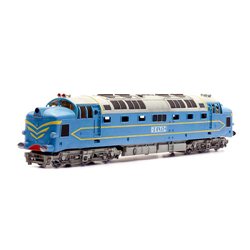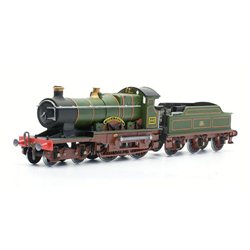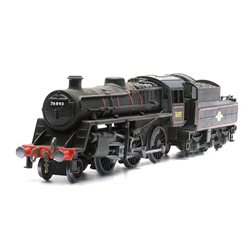It is highly recommended to wear a facemask when sanding resin kit parts. Sanding resin releases fine dust particles...
No products
Product successfully added to your shopping cart
There are 0 items in your cart. There is 1 item in your cart.
Search Tips
Christmas and New Year
We are dispatching orders every weekday apart from Christmas Day, Boxing Day and New Year's Day.
If you select next day delivery at checkout, please note deliveries are not made on public holidays or Sundays.
The shop in Sandown is open 23rd and 24th December, then closed from 25th December, reopening on 30th December.
Why are most diesel locomotives double-ended whereas most steam locomotives were not?
The reason why most diesel locomotives are double-ended, meaning they have a cab and controls at both ends, while most steam locomotives were not, can be attributed to the differences in their operational and maintenance requirements.
One of the main advantages of diesel locomotives is their ability to run in either direction without the need for turning around. This is particularly useful in situations where there are limited turning facilities or in scenarios where locomotives need to be quickly repositioned. By having cabs at both ends, diesel locomotives can simply change direction by switching the controls to the other cab, eliminating the need for time-consuming and potentially costly turning manoeuvres.
In contrast, steam locomotives required a more complex turnaround process. Steam locomotives rely on a firebox at one end to generate steam, which is then used to power the pistons and drive the wheels. This means that the locomotive needs to be facing in the direction of travel, with the firebox at the front. Turning a steam locomotive around involved disconnecting and reconnecting various components. This process was time-consuming and required specialized arrangements such as turntables or specific track configurations.
Additionally, steam locomotives required regular maintenance, including the cleaning and disposal of ash and soot from the firebox. Having a single-ended design made it easier to access and maintain the firebox and other components of the locomotive. Double-ended steam locomotives did exist, but they were less common due to the added complexity and maintenance requirements.
It's worth noting that the choice of single-ended or double-ended design is also influenced by other factors such as the type of service the locomotive is intended for and the specific operational requirements of the railway.
Click here to receive the tips weekly in your mailbox. You can unsubscribe at any time.










